This is The Summer Prep Series
The mindset, curation, and organization for a summer of family connection, and growth at home.
…
Part 2: Organization and Curation
In 2016, a friend and aspiring professional organizer, asked if I would set aside 2 days to tackle our space and storage troubles. I recalled the 3 boxes containing a total of 125 candle holders from our 2013 wedding hidden under my sofa and 6 months of baby clothes and activities that Isla had outgrown taking up prime real estate in our hallway. My summer dresses always had a faint wrinkle at the hem from the bottom 6 inches sitting scrunched on my printer which lived in it’s cave at the bottom of my closet. The iron was unaccessible most days, hidden behind art supplies that shifted around as needed. My answer was a resounding yes!
None of the solutions we employed that day cost anything more than my time.
In fact, 2 weeks later, after a frenzy of Facebook Marketplace ads that slowly depleted a pile of items I had committed to selling, I had passed along over $1500 of serving dishes, candle holders, fans, rugs, clocks, side tables, plants, and various other vestiges of a late-20s woman who had not yet come to terms with her tiny townhouse life in Toronto to other happy condo owners in Liberty Village. I used a portion of that to pay for some new storage bins and shelving, and the rest we put away for future improvements.
A collection of my listed items on marketplace from this time.
Over the next 2 years I solidified my commitment to being a tidy person. I listened to the Minimalists podcast, joined their newsletter so I could absorb their wisdom weekly, and even went to see their documentary where they arrived at the end for a live Q&A. Afterwards I rushed home to take notes, fearing I would forget the best questions and responses before I could write them down. I read Marie Kondo’s book, The Life Changing Magic of Tidying Up and then, via Audible, listened to it another 5 or 6 times. It became my anthem as I folded laundry and tidied after a family that had grown from 3 to 4. I imagined Marie there with me as I paired socks and realized that orienting my pants the other direction allowed me to fit them all in a single bin in my wardrobe.
Listening to Marie’s book is a practice I return to when I need a little boost in motivation.
In 2018, I invited yet another dear friend, Elza, a professional photographer who made magic out of the sweetest and simple scenes, to join me in tackling what Marie calls “emotional items”. In this case, it was my beloved Abuela’s stash of fabrics, knitting needles, barely started and nearly completed cross stitching. Having a friend hold me accountable for the time I would need to use some, if any, of these materials in the next couple decades helped me to put them aside into deep storage as I processed the idea of letting them go forever. I wasn’t until a year later, at 41 weeks and 5 days pregnant with my third that I would drop them off at the TDSB’s Artsjunktion for Toronto teachers to make use of - a meaningful, cathartic release, first through the delivery, followed by tears, and then through belting out the melancholic melodies of Leonard Cohen as I drove to take myself out for some much needed Phở. What came next could have been from the relaxation and enjoyment of that nourishing and hydrating bowl of soup in solitude, aside from the quiet and sweet restaurant owner who check in on me every so often. However, I prefer to believe it was the confidence gained in my decisiveness and the sense of peace that came when I chose to release myself from the responsibility of carrying on my Abuela’s work that allowed me to go into labour not more than an hour later.
It felt like permission to move on.
…
Permission Given and Taken
I knew I had to search and grow beyond what came naturally to me if I was going to create the environment I had hoped to for my children - one that was not only beautiful and tidy, but simple enough for little ones to navigate, to participate actively in, to find independence and confidence in, and ultimately, to find their place within our family’s routines and rituals as they unfold into her own unique beings.
I knew the power that colour palettes, fabric swatches and architectural features had over our brains while experiencing a space, or a moment as those in the industry like to say. A reminder to pause in it, and allow it do perform its work on you. That felt too much like an outward artistic expression than what I was seeking.
I was searching for something far more intimate.
There was a potential I saw for understanding how we interacted with our home. It was a physical representation of our personal and family values and the way we chose to live those values through our principles. It was in our placement of furniture, our living room rug or rather the choice to have one at all, in the colour of our walls, and in the objects that we touched, smelled, tasted, looked at and felt against our skin daily.
This was our family’s home and each unique member played a role in its design.
…
A few months ago while listening to The Conscious Parent, yes once again while folding laundry, I was awakened to a new understanding of my role as a parent.
“Once we view parenting as a mutually beneficial partnership we can accept that our children are a necessary part of our evolution and that they potentially have a greater capacity to contribute to our lives than we have of contributing to theirs.”
Dr. Shafali Tsabury, The Conscious Parent
I was instantly humbled. This short, fleeting, and intense period of our lives was something I was going to give myself permission to be grateful for. Maria Montessori in her 1946 London Lectures had a similar sentiment.
“The child is the creator of the man, certainly with regard to his adaptation to the environment.”
Marie Kondo’s The Life-Changing Magic of Tidying Up encouraged welcoming that same transformation.
“The space in which we live should be for the person we are becoming now, not for the person we were in the past.”
Allowing my children to shape me was in turn shaping our environment. While working on the floor with them I found myself recognizing how difficult it was for my 24 month old to put away their bin of blocks on that shelf 24” from the floor, or that unpainted underside of an Ikea cabinet, making the room a little less beautiful from down there. Humbleness was my gateway to compassion and I began shaping our environment to suit their abilities, both mentally and physically. I began to think as an Occupational Therapist would, with mini assessments and interventions leading to ever more independent children.
“In our plan for the education of little children we must create an attractive environment. Into this environment we must put everything that is good for the mind, along with an understanding and affectionate person.” - Maria Montessori, The 1946 London Lectures pg. 109.
With the guidance of Shafali, Maria, and Marie, I was uncovering a framework for designing family homes.
…
Methods over madness
When visitors would come to our tiny townhome they would fall into 1 of 2 groups. The first group being those that believed in the magic that we were doing. The illusion with 5 people living here we had space to spare for guests in our 300 sq. ft. main floor living space, our 300 sq. ft. second floor with 2 bedrooms and a bathroom, and our 200 sq. ft. parent’s “loft” complete with our murphy bed squeezed in beside our LG combo washer dryer and our home’s mechanical systems. The second group was one that I like to call the questioner-suggestioners. They would say things like “Oh, don’t you have space for that?”, “Are you sure you’re ok sleeping near the laundry machine like that?”, or my favourite “Don’t you think it would be easier if you had a bigger place?”.
Yes, perhaps in some ways it would have. But we, 2 adults that work in tech, could not pass up the challenge.
The methods
Having lived together in Shanghai for a year in our 20s and visited Hong Kong many times for work, and visa renewals, Nate and I encountered small space life en mass. Curious, we welcomed opportunities to learn more from our local friends and eventually came to these insights:
Life lived in constrained spaces required great creativity.
Small space living was an intimate endeavour that required everyone to remain humble and teachable, if you hoped to live harmoniously with each other.
Humans with permanent homes have too much stuff.
Systems not only made small spaces livable, they made the people within them more methodical in every aspect of their lives, a quality I admired about deep thinkers and great creators everywhere.
Think vertically and layered. Floor to ceiling systems are most efficient and identifying a system’s cubed ft. helps us understand its impacts on our space.
Multipurpose items and spaces are essential to successful small space life. I later found Vancouver’s 5 Kids 1 Condo writer Adrian Crook’s concept of Square-Foot Hours to help rationalize this thinking.
Home is where we feel rooted. Small houses require community spaces to be part of the home. Seniors took to movement and art in the parks every morning. Shop owners watched over children walking to and from school each day. Families gathered for casual meals off of stacked dishes on tiny tables in almost impossibly small dining establishments each evening. The feeling of home was in this togetherness.
Back to laundry folding with Marie Kondo on repeat in our tiny townhome, I became well acquainted with her 6 rules for tidying up:
Commit yourself to tidying up
Imagine your ideal lifestyle
Finish discarding first
Tidy by category, not by location
Follow the correct order
The Konmari “Correct Order for Tidying”:
Clothing
Books
Papers
Komodo (all the additional stuff)
Sentimental Items
Going further back in time to a very pregnant Erika, preparing for my first to arrive, I also recall a conversation with my dear friend Jan. Now the co-author of the book Lead With Love, owner of Joyful Hearts Co, creator of my favourite mindfulness tools in our home, and trained in the Montessoir method, she recommended reading Montessori from the Start: The Child at Home, from Birth to Age Three, a book by Lynn Lillard Jessen and Paula Polk Lillard. This book and then many that followed formed my understanding of what it meant to be a Montessori parent and household. A thoughtful enmeshing of environment and mindset. Of design and education-at-home.
Although a prolific writer of painstaking details, Maria didn’t come up with a list of principles herself. However, many have attempted to distill it into something like these 10 principles from Australia’s Montessori Academy:
Respect the child,
Honour the period of the absorbent mind (0 until about 6)
Take notice and support sensitive periods
Educate the whole child. Math and language along with practical life, sensorial, and cultural learning.
Individualize learning.
Design for freedom of movement and choice.
The prepared environment is more important than the materials within it.
Foster intrinsic motivation.
Encourage independence.
Give space for auto-education. That is that children are willing and able to teach themselves if provided with interesting learning stimulus as Montessori materials were designed to provide.
And years later, as I sit here writing this, I reference another set of principles that have come forward as we searched for a greater system by which to design our home life within our greater environment and planet: Permaculture. This term, a combination of permanent culture and agriculture, termed by Bill Millison and David Holmgren, was their whole-systems approach to land management and settlement design. From large cities, down to individual households like ours, there’s is much wisdom and harmony to be gained from these principles:
Observe and interact: Take time to engage with nature to design solutions that suit a particular situation.
Catch and store energy: Develop systems that collect resources at peak abundance for use in times of need.
Obtain a yield: Emphasize projects that generate meaningful rewards.
Apply self-regulation and accept feedback: Discourage inappropriate activity to ensure that systems function well.
Use and value renewable resources and services: Make the best use of nature's abundance: reduce consumption and dependence on non-renewable resources.
Produce no waste: Value and employ all available resources: waste nothing.
Design from patterns to details: Observe patterns in nature and society and use them to inform designs, later adding details.
Integrate rather than segregate: Proper designs allow relationships to develop between design elements, allowing them to work together to support each other.
Use small and slow solutions: Small and slow systems are easier to maintain, make better use of local resources, and produce more sustainable outcomes.
Use and value diversity: Diversity reduces system-level vulnerability to threats and fully exploits its environment.
Use edges and value the marginal: The border between things is where the most interesting events take place. These are often the system's most valuable, diverse, and productive elements.
Creatively use and respond to change: A positive impact on inevitable change comes from careful observation, followed by well-timed intervention.
Armed with my small space experiences, Marie’s rules and correct order, Dr. Montessori’s findings, and the whole-system thinking of Bill Mollison and David Holmgren, I was ready to face any small or challenging family space.
…
The madness
After 11 weeks of pandemic induced lock-down, including all of our city’s public spaces and provinces parks, we made painful decision to sell our townhome, and with it our 7 years of systems.
Our home with our systems vs. the space emptied and staged to sell via our creative and detail oriented real estate agent, the amazing Danielle Demerino of Danielle In the City.
After renting a larger suburban home just outside of Toronto, we spotted and were the lucky bidders of 7 to pay more than we ever thought we would or could on a small-ish under 2000 sq. ft. 2 bedroom home at the city’s western boundary, bordered by the Humber River. A river we are fortunate to back onto, and a property that was once a farm with large market gardens and greenhouses providing the city’s florist shops with colourful blooms in the early to mid 1900’s, before Hurricane Hazel devastated the the Humber Valley, and with it, it’s farming culture.
Our little farmhouse, seemingly untouched by the hurricane and flooding, still stands among the charming late 50’s development of modern semi-detached homes and a handful of small century old cottages that are now converted to family homes. We are all in a version of small space living here, and families across Toronto are feeling the same pressure as they try to reconcile personal and family life, commute times, the income opportunities the city provides, along with a housing market that has gone up 453% in the last 25 years, where the median detached home costs more than 2x the median condo price, and where the average house price is $1.2M. Where it will cost you an average of $2100 for a 1 bdm, $2700 for a 2 bdm, and $3400 for a 3 bdm rental monthly.
Small space living in Toronto is not here because it’s trendy - it’s here because families like ourselves are making decisions between square footage and having enough to take care of ourselves into old age, if we’re lucky. As my Abuela used to say in her thick Castile et Lion Spanish accent; “Erika, you either get old, or die trying”.
With these pressures, and our methods, our children’s Montessori school, the local park, the grocery store, the bakery, community drop in spaces and friend’s homes all became an extension of our space - a place we loved to be and felt deeply connected to.
Home.
…
What’s next for Raise In Place? Here’s The Summer Prep Series schedule:
Part 1’s resources + weekend challenge
June 14th - Part 2: Curation + Organization (here!)
June 17st - Part 2’s follow up resources + weekend challenge
June 21st - Part 3: Curation + Organization
June 24th - Part 3’s follow up resources + summer challenge
July 26th - Half-way Check-in
August 30th - Summer Reflection
Until next time,
Erika
…
This newsletter is called Raise In Place, and is the newsletter companion to my Residential Design Consulting Services + Shop, Bueno Market. This Summer Prep post is part of a series inside that newsletter called The Summer Prep Series.
www.buenomarket.com
IG @buenomarket.com
TW @thebuenomarket
Questions, comments, requests > erika@buenomarket.com


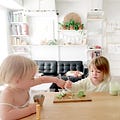



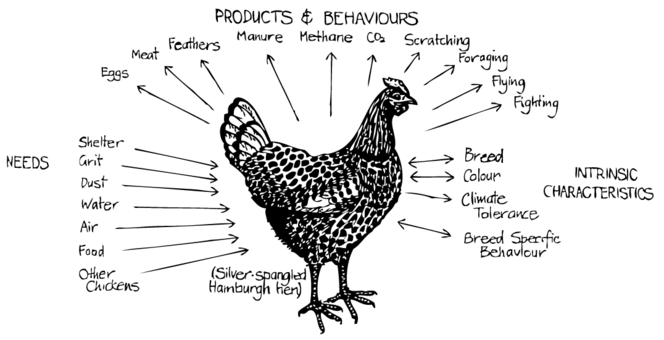
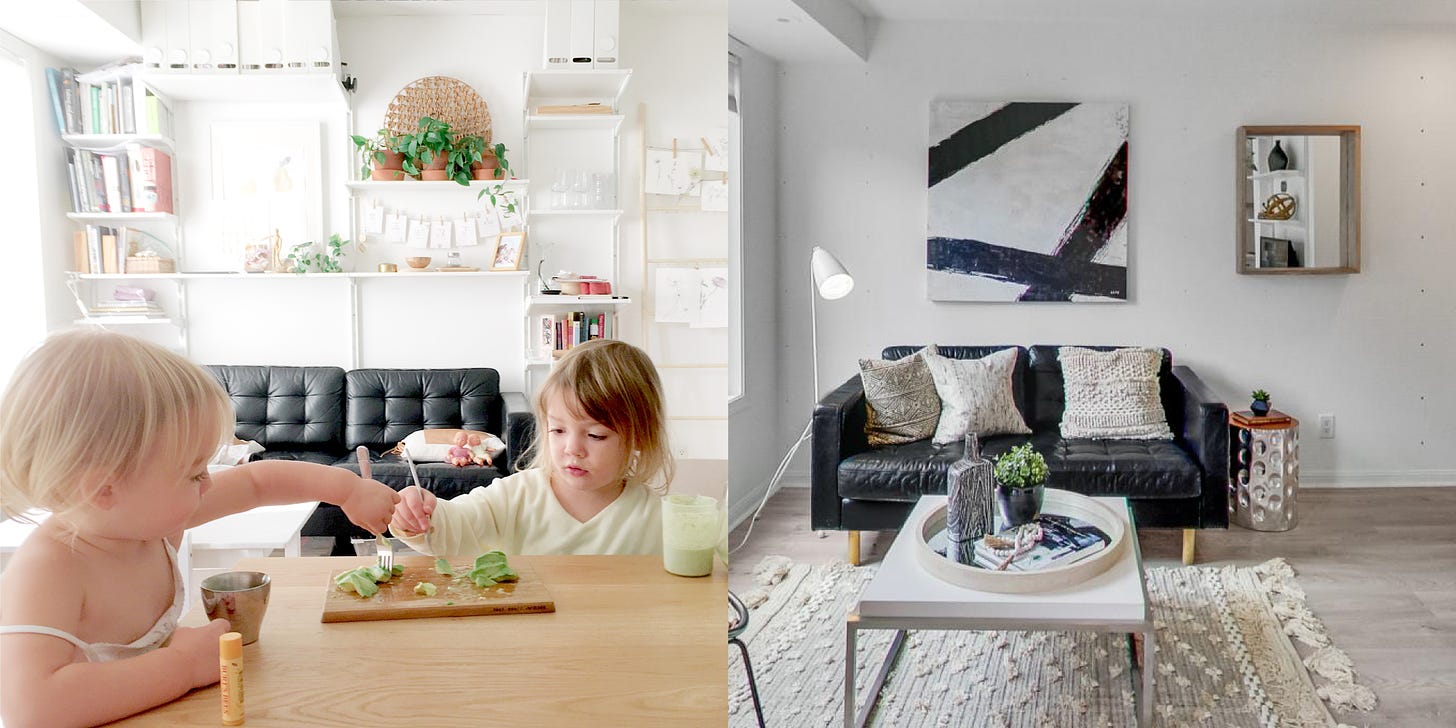


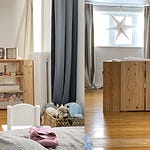
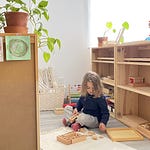
Methods over Madness